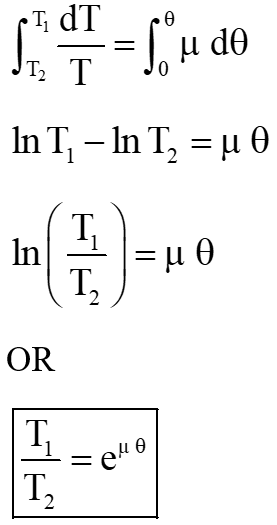
Belt Friction
Belt friction is an important aspect of mechanical engineering, particularly in the field of power transmission systems. It enables the efficient transfer of power and plays a crucial role in the design and analysis of power transmission systems. Belt friction refers to the frictional force that exists between a belt and the pulley it is wrapped around. When a belt is in contact with a pulley, frictional forces are generated due to the tension in the belt and the normal force between the belt and the pulley's surface. These frictional forces enable the transfer of power from the driving pulley to the driven pulley.
Belt Friction Formula (Flat Belt Case)
The theory of Coulomb friction can also be used to analyze the forces acting between a flexible body, such as a rope or belt, and a friction surface. The equation utilized for modeling belt friction, under the assumption that the belt has negligible mass and its material composition remains constant, is as follows:
The equation utilized for modeling belt friction, under the assumption that the belt has negligible mass and its material composition remains constant, is as follows:
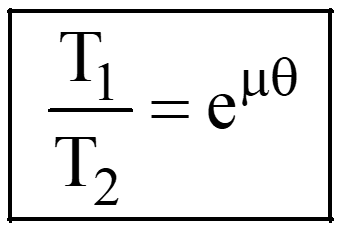 Where:
T
1
is the tension on the tight side of the belt,
T
2
is the tension on the slack side of the belt,
μ is the static friction coefficient, which is dimensionless, and
θ is the angle of wrap, measured in radians.
Where:
T
1
is the tension on the tight side of the belt,
T
2
is the tension on the slack side of the belt,
μ is the static friction coefficient, which is dimensionless, and
θ is the angle of wrap, measured in radians.
Proof
When there is friction between the belt and the cylindrical surface, unequal tensions on each side of the belt result in a frictional force opposing sliding motion. The frictional force acts parallel to the surface and prevents the belt from slipping. It works in conjunction with the normal force, which is influenced by the tension and curvature of the belt. The magnitude of the friction force depends on the friction coefficient and the normal reaction. However, if the tension imbalance exceeds the maximum static friction, slippage occurs.
Let’s have a flexible member passing over a cylinder. The flexible member forms a total angle θ at the center.
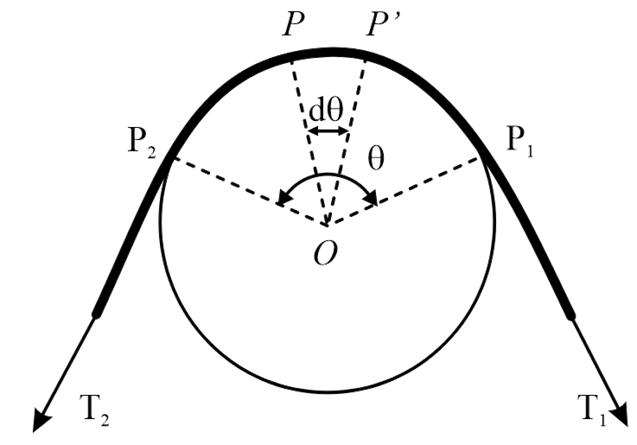
The free-body diagram of the differential element is shown in Fig. The tensions on either side of a small segment of the flexible member are given as T and T + dT, where dT represents a small change in tension. These tensions act in directions perpendicular to the radii drawn at the ends of the element.
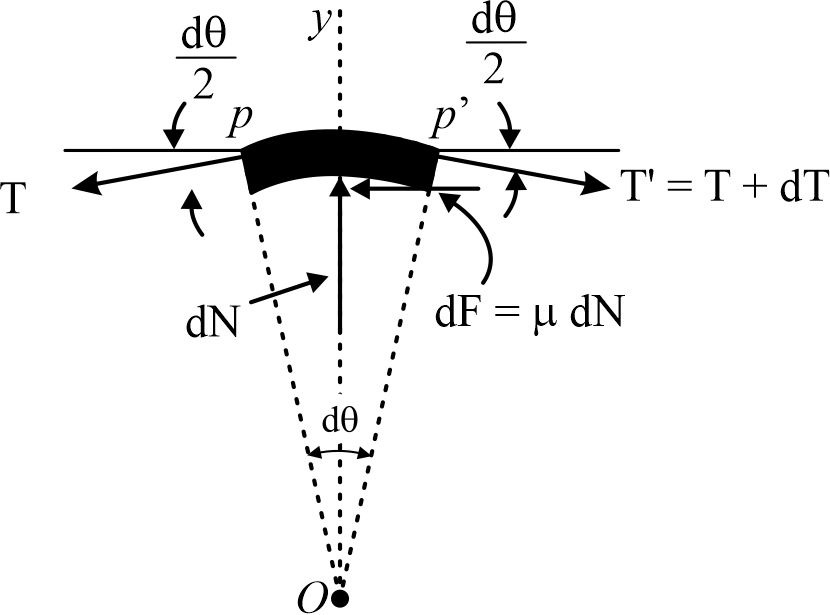
The difference in tensions, dT, is caused by the force of friction between the flexible member and the cylinder. Motion is assumed to be impending.
![]()
Let's focus on the equilibrium of a small segment over an angle dθ. The normal force is a differential force because it acts on a differential element of area.
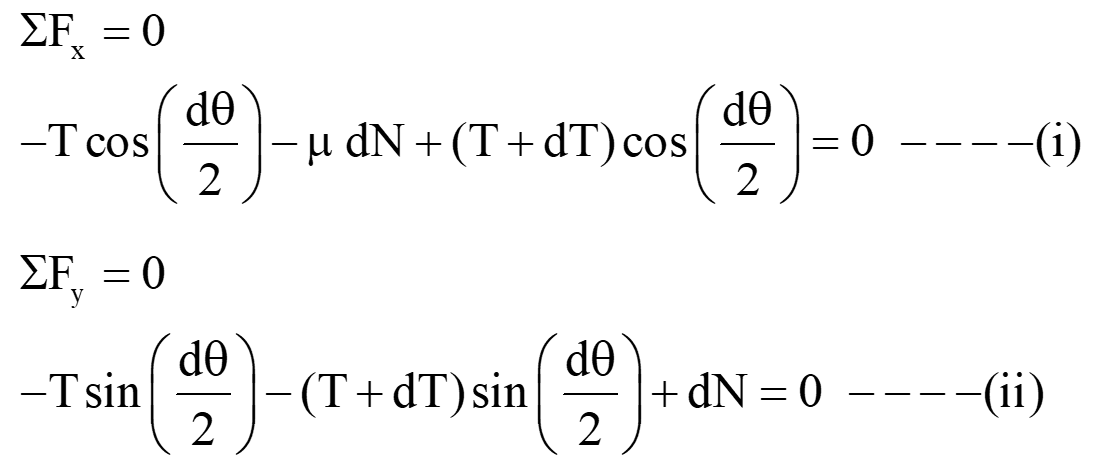
For small angles, cos(dθ) = 1, sin(dθ) = dθ
Now equation (i) becomes,

and equation (ii) becomes,
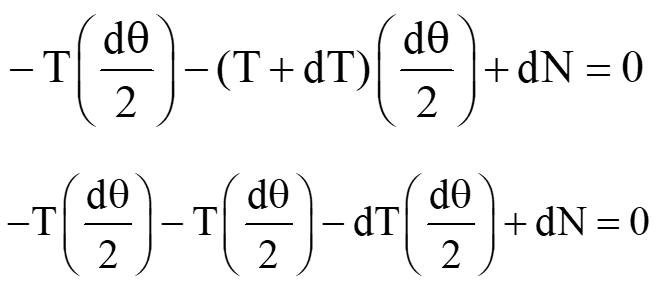

Substitute value in equation (iii),
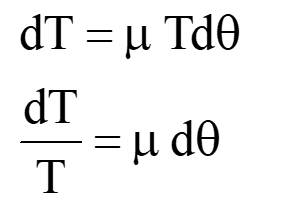
Integrate the above equation;
